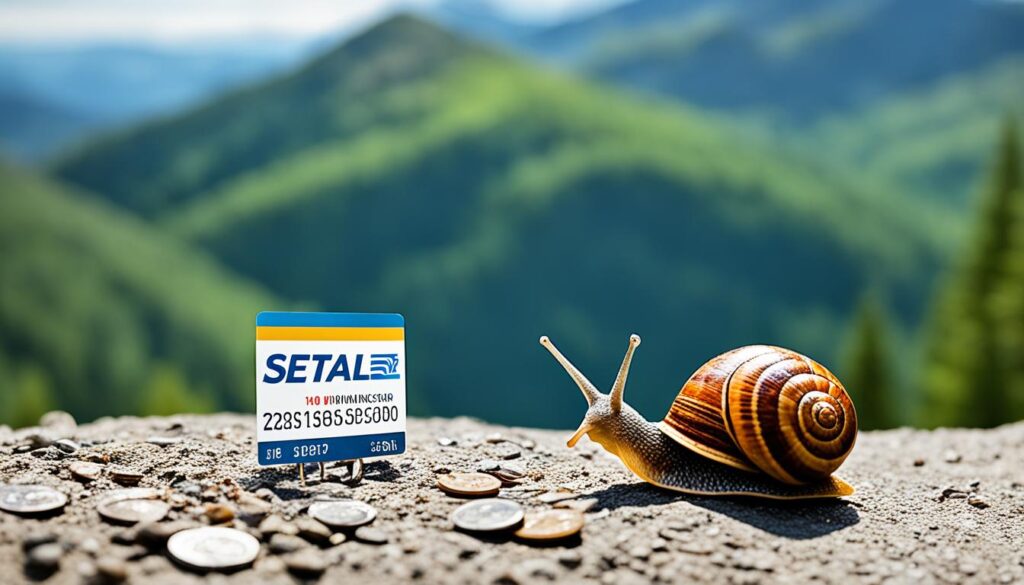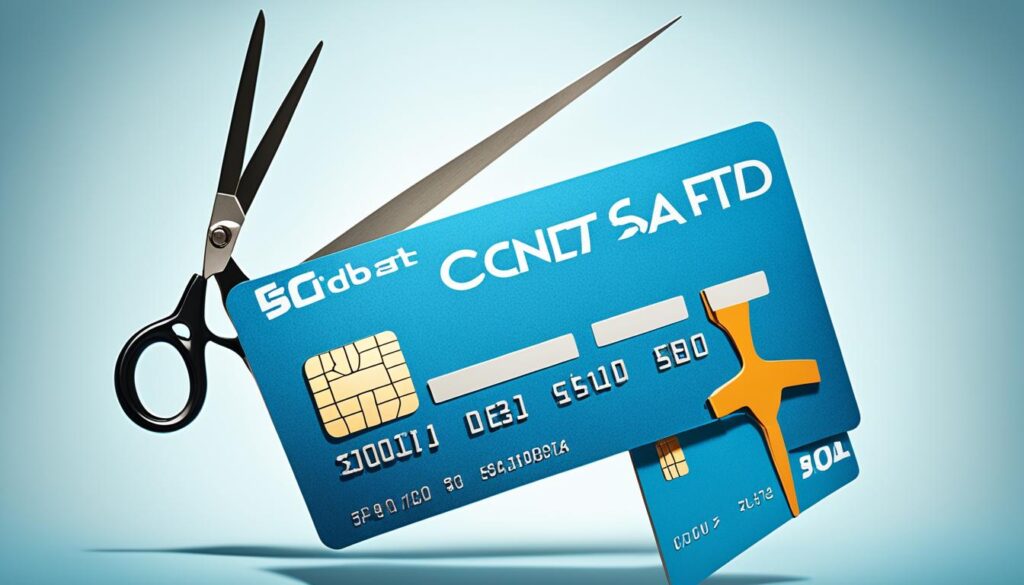Are you struggling to make a dent in your credit card debt? If so, you’re not alone. Many Americans find themselves in a never-ending cycle of high interest rates and minimum payments that barely make a dent in their balances. But what if there was a way to break free from this cycle and pay off your credit card debt faster than you ever thought possible?
Let me introduce you to Mark, a 32-year-old marketing executive who found himself drowning in credit card debt. Mark loved to take advantage of all the perks and rewards that his credit cards offered, but he struggled to keep up with the monthly payments. His balances were piling up, and he knew he needed to take action before things spun out of control.
After doing some research and seeking advice from financial experts, Mark developed a plan to tackle his debt head-on. He implemented several strategies that allowed him to pay off his credit card debt faster than he ever imagined. Now, Mark is finally on the path to financial freedom, and he wants to share his story and insights with you.
Key Takeaways:
- Developing a plan and sticking to it is crucial for paying off credit card debt fast.
- Focus on high-interest rate cards or small balances to prioritize your payments.
- Paying more than the minimum payment can help you reduce your credit card debt faster.
- Consolidating your debt can be an effective strategy to accelerate your debt repayment.
- Create a budget, cut back on unnecessary expenses, and allocate the savings towards paying off your debt.
Focus on High-Interest Rate Cards or Small Balances?
When it comes to paying off multiple credit card balances, there are two popular strategies you can choose from: focusing on high-interest rate cards or small balances. Each approach offers its own benefits and can be effective in reducing credit card debt.
1. Focus on High-Interest Rate Cards
If you opt for this strategy, start by identifying the credit card with the highest interest rate. By prioritizing this card and allocating more of your monthly payment towards it, you can minimize the amount of interest that accrues over time. Paying off the high-interest rate card first enables you to save money on interest charges in the long run.
2. Pay off the Smallest Balance First (Snowball Method)
The snowball method involves tackling the smallest credit card balance first, regardless of interest rates. By paying off the card with the smallest balance, you gain a sense of accomplishment and motivation, which can ignite your debt repayment journey. As you eliminate smaller balances, you can then redirect those payments towards larger balances, gradually gaining momentum and making significant progress.
Remember, regardless of which strategy you choose, it’s crucial to continue making at least the minimum payments on all your credit cards to maintain a good payment history and avoid additional fees and penalties.
Both these approaches have their advantages and can be effective debt reduction strategies. Ultimately, the best choice depends on your individual financial situation and preferences. Analyze your credit card balances, interest rates, and personal comfort level before deciding which method resonates best with your goals.
| Focus on High-Interest Rate Cards | Pay off the Smallest Balance First (Snowball Method) |
|---|---|
| – Minimizes interest charges | – Creates a sense of accomplishment and motivation |
| – Saves money in the long run | – Gains momentum as smaller balances are eliminated |
| – Ideal for those motivated by financial savings | – Ideal for those motivated by quick wins and psychological progress |
Pay More Than the Minimum Payment
When it comes to eliminating credit card debt, one effective strategy is to pay more than the minimum payment each month. While the minimum payment may seem manageable and convenient, it will keep you trapped in debt for a long time.
By making larger payments, you can significantly reduce your credit card debt and save on interest charges. How does this work? Let’s break it down:
- Pay down the principal balance quicker: When you pay more than the minimum, a greater portion of your payment goes towards reducing the principal balance. This means that your debt decreases faster, allowing you to become debt-free sooner.
- Save on interest charges: Credit card interest can be a major expense, especially if you carry a high balance. By paying more than the minimum, you reduce the outstanding balance, which, in turn, reduces the amount of interest charged each month. Over time, this can result in significant savings.
It’s crucial to review your credit card statements to see the impact of paying more than the minimum on your overall interest costs. Tracking your progress will help you stay motivated and informed about the positive effects of your debt reduction efforts.
Remember, every dollar you put towards paying off your credit card debt beyond the minimum payment brings you one step closer to financial freedom.
Stay motivated:
“The journey to becoming debt-free can be challenging, but the rewards are immeasurable. Keep your goals in mind and stay focused on the financial security and peace of mind that await you.”

By incorporating this debt reduction method into your financial plan, you can accelerate your progress towards eliminating credit card debt and achieve your goal of financial independence.
Consolidating Your Debt
Consolidating your credit card debt can be a helpful strategy to pay off your debt faster. By combining multiple balances into one, you can simplify your repayment process and potentially lower your interest rates. Two common methods of debt consolidation include:
1. Balance Transfer Credit Cards
If you’re looking to save on interest charges, a balance transfer credit card can be a viable option. This involves transferring your higher-interest credit card balances to a new card with a lower or 0% introductory interest rate. By consolidating your debt onto a single card, you can focus on paying off the balance without accruing additional interest.
It’s important to consider the following factors when choosing a balance transfer credit card:
- Introductory interest rate: Look for cards with the longest 0% APR period to maximize your interest savings.
- Balance transfer fees: Some cards charge a fee for transferring your balances. Calculate if the fee outweighs the interest savings.
- Post-introductory interest rate: Be aware of the interest rate that will apply after the introductory period ends.
2. Home Equity Loans
If you own a home and have built up equity, a home equity loan can provide a means to consolidate your credit card debt. By borrowing against the equity, you can use the loan proceeds to pay off your credit card balances. Home equity loans often offer lower interest rates compared to credit cards, making it an attractive option for debt consolidation.
Consider the following factors before opting for a home equity loan:
- Interest rates: Compare the interest rates on home equity loans with your current credit card rates to determine if it’s a cost-effective option.
- Fees and closing costs: Take into account any fees associated with obtaining a home equity loan, such as application fees or appraisal costs.
- Repayment terms: Understand the repayment schedule, including the monthly payment and loan duration, to ensure it aligns with your financial goals.
Before deciding on a debt consolidation method, it’s crucial to evaluate your financial situation, seek professional advice if needed, and consider the potential impact on your credit score.

“Consolidating your credit card debt can help simplify your repayment journey and potentially save on interest charges.”
Create a Budget and Reduce Spending
Creating a budget and reducing unnecessary spending are smart ways to pay off credit card debt and develop effective debt repayment plans. By carefully managing your finances and making conscious choices about your expenses, you can free up money to put towards paying off your credit card debt faster.
1. Categorize Your Monthly Expenses
To create an effective budget, start by categorizing your monthly expenses. This will help you identify areas where you can cut back and allocate more funds towards debt repayment. Common expense categories include:
- Housing (rent/mortgage, utilities)
- Transportation (car payments, gas, insurance)
- Food (groceries, dining out)
- Entertainment and Recreation
- Debt Payments (minimum payments on other loans or credit cards)
- Personal Care
- Insurance premiums
- Savings
2. Identify Areas to Cut Back
Once you have categorized your expenses, take a close look at each category and identify areas where you can reduce spending. Consider:
- Eliminating non-essential subscriptions or memberships
- Reducing dining out or entertainment expenses
- Shopping for groceries strategically and using coupons or sales
- Opting for generic or store-brand products instead of name brands
- Limiting impulse purchases and unnecessary splurges
Remember, every dollar you save by cutting back on non-essential expenses is a dollar you can put towards paying off your credit card debt.
3. Reallocate Savings Towards Debt
Once you have identified areas to cut back and have saved some money, make a conscious effort to reallocate those savings towards your credit card debt. Consider setting up automatic payments to ensure that the extra funds go directly towards debt reduction each month.
By creating a budget and reducing unnecessary spending, you can accelerate your journey towards becoming debt-free. Consistency and discipline are key, so make sure to stick to your budget and continue finding ways to minimize expenses. With each payment, you’ll be one step closer to achieving your goal of financial freedom.
Use Cash Instead of Credit Cards
One effective strategy for paying off credit card debt is to use cash or a debit card instead of relying on credit cards. By making this simple change in your spending habits, you can avoid the pitfalls of overspending and impulse purchases that often come with using credit cards.
When you use cash, you have a clearer understanding of your available funds and are more likely to think twice before making unnecessary purchases. This increased awareness can help you better control your expenses and stay on track with your debt repayment plan.
“Paying with cash creates a psychological barrier that makes it harder to spend frivolously. It forces you to be more intentional with your purchases and consider their true value.”
In addition to avoiding overspending, using cash can also save you from any additional fees associated with the use of credit cards. Late payment fees, balance transfer fees, and annual fees can all add up and hinder your debt repayment progress. By relying on cash, you eliminate the risk of incurring these extra costs and can allocate more money towards paying off your credit card debt.
So the next time you reach for your wallet, consider using cash or a debit card instead of your credit cards. This small change in your payment method can make a big difference in your journey towards becoming debt-free.
| Factors | Cash | Credit Cards |
|---|---|---|
| Ability to track spending | High | Low |
| Risk of overspending | Low | High |
| Additional fees | None | Possible (late payment fees, balance transfer fees, etc.) |
| Psychological barrier to spending | High | Low |
Commit Extra Funds to Debt Reduction
When you receive a raise, a bonus, or any other unexpected financial windfall, consider using it to accelerate your journey to becoming debt-free. Instead of adding these extra funds to your monthly spending, commit them towards reducing your credit card debt. By making this conscious choice, you can make significant progress in paying off your debt faster and achieving financial freedom.
Maximize Your Financial Gains
Receiving extra funds provides a valuable opportunity to make a substantial dent in your credit card debt. Rather than succumbing to the temptation of increased spending, diverting these additional resources towards debt reduction can help you achieve your financial goals more quickly. By taking advantage of this boost, you can decrease your debt burden and potentially save on interest charges over time.
Here are a few smart strategies for putting your extra funds to work:
- Make a lump-sum payment: Use the entirety or a significant portion of the windfall to make a substantial payment towards your credit card debt. This will reduce your outstanding balance and decrease the overall interest you’ll pay in the long run.
- Double up on payments: If your extra funds aren’t enough to cover the full outstanding balance, consider making double payments each month. By consistently paying more than the minimum payment, you can pay down your debt faster and save on interest charges.
- Target specific high-interest cards: If you have multiple credit card debts, focus on paying off the cards with the highest interest rates first. This approach can help you save more money in the long run by reducing the overall interest you’ll pay.
Stay Committed to Your Goal
“To pay off debt, you need a plan, perseverance, and the will to overcome any obstacles along the way. By committing extra income towards debt reduction, you’re actively taking steps towards a debt-free future.” – Financial Expert
Remember, every extra dollar you put towards paying off your credit card debt counts. It may require some sacrifices and discipline, but the sooner you can eliminate your debt, the sooner you’ll experience the financial peace of mind that comes with being debt-free.
Can the Strategies for Paying Off Medical Debt Also be Applied to Credit Card Debt?
When it comes to dealing with credit card debt, many of the efficient medical debt payoff strategies can also be applied. Creating a budget, negotiating with creditors, and seeking financial assistance are all useful tactics for both types of debt. It’s important to address both with a strategic approach.
Conclusion
Paying off credit card debt can be challenging, but with the right strategies and commitment, it is achievable. By developing a solid plan and employing effective debt management techniques, you can regain control of your finances and become debt-free.
One important strategy is to focus on reducing interest costs. Prioritize paying off high-interest rate cards or consider using the snowball method to pay off small balances. Both approaches can help accelerate your credit card debt reduction.
In addition, making consistent payments and paying more than the minimum amount due can significantly reduce your debt. By allocating more money towards your principal balance, you can save on interest charges and shorten your repayment timeline.
Consolidating your credit card debt through options like balance transfer credit cards or home equity loans is another effective way to expedite repayment. However, it’s vital to carefully consider the associated fees and interest rates before choosing these options.
Creating a budget, reducing unnecessary spending, and using cash instead of credit cards will also contribute to your debt-free journey. By realigning your expenses and committing any extra funds to debt reduction, you can make quicker progress towards your goal.
In conclusion, paying off credit card debt requires a combination of careful planning, proper strategy selection, and consistent action. With determination and the implementation of these debt management techniques, you can successfully eliminate your credit card debt and achieve financial freedom.
FAQ
What strategies can help me pay off credit card debt fast?
There are several strategies you can utilize to pay off credit card debt quickly. These include focusing on high-interest rate cards or small balances, paying more than the minimum payment, consolidating your debt, creating a budget and reducing spending, using cash instead of credit cards, and committing extra funds to debt reduction.
Should I focus on paying off high-interest rate cards or small balances first?
It depends on your financial situation and goals. If you want to minimize the amount of interest you pay, focusing on high-interest rate cards first may be beneficial. On the other hand, if you prefer small victories and the motivation of paying off a debt completely, the snowball method of tackling small balances first may be more effective for you.
How can paying more than the minimum payment help me pay off credit card debt faster?
By making larger payments, you can pay down the principal balance quicker and save on interest charges. Review your credit card statements to understand the impact of paying more than the minimum on your overall interest costs.
What are some options for consolidating credit card debt?
Two common methods for consolidating credit card debt are balance transfer credit cards and home equity loans. Balance transfer credit cards allow you to transfer higher-interest balances to a new card with a lower interest rate, while home equity loans use the equity in your home to pay off credit card debt.
How can creating a budget and reducing spending help me pay off credit card debt?
By categorizing your monthly expenses and identifying areas where you can cut back, you can free up money to put towards paying off your credit card debt. This reallocation of funds can help you make faster progress in becoming debt-free.
What are the benefits of using cash instead of credit cards?
Using cash or a debit card can help you avoid overspending and impulse purchases. It provides a clearer understanding of your spending and allows you to better control your expenses. Additionally, it helps you avoid any additional fees associated with using credit cards.
How can I commit extra funds to debt reduction?
Whenever you receive a raise, bonus, or any other form of financial windfall, consider using it to pay down your credit card debt instead of adding it to your monthly spending. By committing these extra funds to debt reduction, you can make significant progress in paying off your debt faster.
What is the key to paying off credit card debt?
The key is developing a good plan, focusing on reducing interest costs, and making consistent payments. By selecting the right strategy that aligns with your goals and financial situation, you can successfully pay off credit card debt and regain control of your finances.

